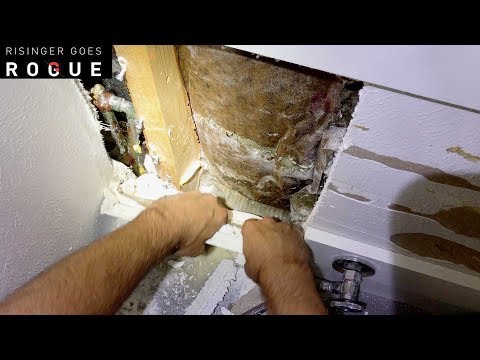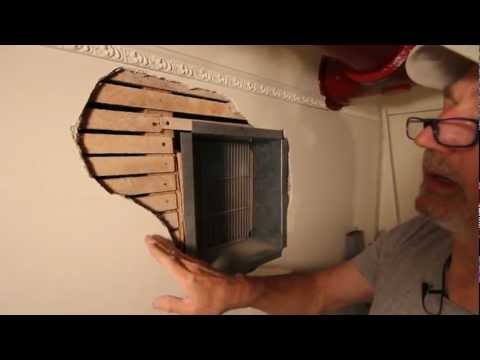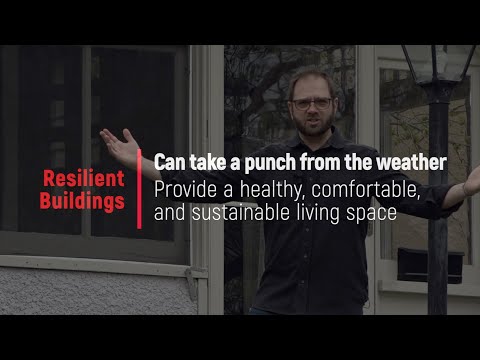Groundwater and surface runoff are just looking for someplace to go; French drains are one option
Hey, good morning, Chuck here with Apple Drains. Today we're going to be installing some corrugated pipe about 200 feet.
Make one trip to the big box store
If you're gonna do this yourself, you come to Lowe's, buy your pipe and materials, load it up, take it back to your job site. Let's go ahead and grab some pipe.
So again, try to get all your materials so that you don't have to make several trips back and forth to Lowe's or to Home Depot, where ever you're buying your material, it will definitely keep some frustration down when you're doing it yourself.
So we've got our material which we got at Lowe's this morning, and got 200 feet of 4 inch solid corrugated pipe.
The solution to a soggy yard is a place to flow
The reason that we're in this yard working, is because back here in the back, they've got a lot of standing water. We've already started our trench through the really hard section up here, and that is through the tree roots. And you can see the tree roots here, if you look carefully, lot of roots down through this line, all coming from this great, big, old maple.
So real difficult area to trench as we went through here. Let's go back and look at the problem, and you can see why this needs to be done.
From the pool, they have an overflow drain that comes out the back, right here by this little statue, and it's just been flooding and flooding and flooding and you can see our trench is already filled up with water, whole area, more than just their yard, it floods over into the neighbor's yard as well.
And you can see they can't even mow their grass over here, it's just so, so wet. And what we need to do is put in some French drains.
So from the end to the overflow, we're gonna begin our line. We'll go much deeper. We'll put our easy drain, the easy flow drain pipe in here. That's the styrofoam peanut. A couple of catch basins here in the low spots. We'll connect it to this section over here where it's gonna change to solid pipe and this is going to run all the way out to the street.
Clean out the trench
So even running the trencher, if you've got wet soil and this clay, you can see how clumpy it gets; see all the clumpiness in that soil? Your trencher doesn't always pull it out, so we have to come back by hand, even though it's all broke up, you still gotta trench it out. We say, "clean out the trench". You just put that shovel right down on the bottom, you scrape it, you use your body weight.
Try to hit the bottom of the trench where you just ran the trencher through so you know you're deep enough. And we're pretty deep, we're down there about 18, 20 inches or so. We're gonna continue that all the way out. Lot of tree roots, lot of rocks.
Just a typical install but we're almost there. And then we'll go ahead and lay some pipe and open this trench up and get this water to flow all the way out to the street.
Okay, so we've almost got this ready to go, we still need to open the trench up here about 6 feet. We've got a nice trench running through the tree roots through here. It goes all the way out to the street. You can see the rolls of pipe out there. That trench goes all the way out to the street.
So I'm gonna work on this area right here just through that mud section and let this drain through there. We'll see what kind of flow we have.
Okay. So we've got it all hooked up and you can see we've got from the pool drain, the overflow. I suspect they either have a sprinkler leak or a pool leak because this water's been flowing the whole time that we're working. It didn't rain last night.
Anyways, catch basin, I use a little bit of easy flow right there, a little bit more easy flow with another catch basin. Easy flow to the next catch basin. And then it changes to solid and it runs all the way out to the street.
Let the muddy mess dry out before cleaning it up
This area here is a real mess to clean up. Not much you can do with it, just let it dry. And then you can recede or reside, whichever you wanna do but it will clean up a little bit. And this water that we see on the ground should enter our system and be carried away.
So that line from the pool drain up there, comes through this bed between these plants and the roses, right through this maple tree. Boy, there're some tough roots in there. We got plenty deep enough. And you can see the line over here, nice little squiggly line here.
Nice solid pipe all the way out runs about 140 feet here from the fence all the way out here to the street. We found the old downspout drain right here in which we just went right through, no big deal, comes all the way out.
Pop-up emitters let water out and exclude critters
And out here at the curb, almost to the curb, I stopped a little short because it kinda goes uphill there.
Put a pop-up on it. Remember how a pop-up works as water comes down the line, it lifts up the emitter and I can actually see water down inside there, I don't know if you can, but yeah. Water is coming all the way to the end of the line. And so from now on, whatever's been going on back there, this water has a place to go.
Before it had no place to go. And that's pretty much what you're doing when you're put in a drain pipe, is you're just giving water a place to go. And the bigger the pipe or the more downhill run you have, the better it works. If you don't have downhill run, then of course you end up putting a sump pump to lift that water, lift it up and then have gravity again, bring it back out.
Okay, so here's the end of our line. This is a pop-up emitter. Water comes down the line, and lifts up the emitter. And yeah, it's full. You see the water right there.
So water is coming down the line already, picking up from the yard in the back. A lot of water back there, and we got a nice solid pipe. You can see we've back-filled the trench here.
Mound the backfill to allow settling
This will all settle really nicely, quite deep here. So it'll settle pretty well, and about 220 feet altogether. A good project for the do-it-yourselfer. I would suggest when you're trenching if you're going to dig this, and you decide, you wanna do it yourself. If you've got these big maples, you really should think about getting a trencher because you can see the tree roots just from the maple.
They are tremendous. And you can definitely chop through them, but a trencher can cut through most of the roots. Let's go back there in the back and take a look.
Okay. So he tells me the original problem is over here in the pool, there's a overflow drain, and that water comes down this line. We actually did make a repair here one time, and it worked great.
However, we've had so much water this spring that the groundwater has risen up. And of course now when that tries to drain, there's just no place for it to go.
French drains give groundwater and surface runoff a place to go
So we've got solid pipe coming around, French drain. We used the easy flow, added catch basins, French drain between the catch basins.
nd this is really soft and wet, but it just has to dry. It will get soaked up into the underground system, which is the gravel perforated pipe.
People call it a French drain, that collects subsurface water and catch-basins. They collect immediate surface water runoff. So when it rains, water can pour directly into your system.
The line comes around through this natural area. Again, a lot of tree roots back here, a lot of tree roots that run all the way out to the street.
So again, a really great project for a do-it-yourselfer. Definitely save $3,000, $4,000 if you do it yourself. And that's after your materials and renting a trencher, so it's really worth doing yourself if you can do it. If not, we're available. We go pretty much anywhere in the country, but you could probably find somebody local if you're not within our areas, which is pretty much Georgia, Tennessee, Florida, Virginia, anyway, Southeast.
So the reason I think they have a sprinkler leak is if you watch that little wheel right there, you can see it moving. There's no one home here, and that water is still draining through the line. Just a little trickle. So I think they have a sprinkler leak or they have a hole in their pool, but that would indicate a sprinkler leak right there.
—Apple Drains is a waterproofing and drainage contractor in NC, FL, and GA. See more on their YouTube channel











